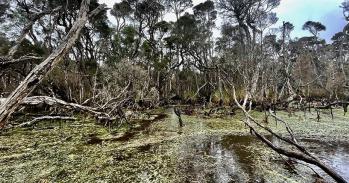
Chinese migrant workers in Japan are more than passive victims of difficult work conditions and are able to use their own networks and provide mutual support, according to new research.
Chinese migrant workers in Japan are more than passive victims of difficult work conditions and are able to use their own networks and provide mutual support, according to new research.
"I go beyond the labelling of Chinese migrants as passive victims of difficult work conditions and exploitation and argue that Chinese peasant workers possess an agency to negotiate, navigate, and survive in the village."
Meng Liang
The study, “Place making” in Kawakami: aspirations and migrant realities of Chinese “technical interns”, was led by Gates Cambridge Scholar Meng Liang and was published in the peer reviewed journal Contemporary Japan.
The paper examines Chinese agricultural labour migrants’ experiences in rural Japan. The research is based on multi-sited ethnography, mainly in Kawakami, a village located in central Japan, from July to November 2012.
Meng Liang says: "I go beyond the labelling of Chinese migrants as passive victims of difficult work conditions and exploitation, which pervades much of the literature on international migration, and argue that Chinese peasant workers possess an agency to negotiate, navigate, and survive in the village. The strategy they take is to contest over local institutions to build up their own 'places', where they can find provisional security, a sense of relief, and mutual support. These 'places' further facilitate the formation of social networks among the workers, although this is officially repressed by the dominant society. A functioning social network plays a significant role to help workers adapt, overcome difficulties, and exercise their agency in a more effective way."
Meng, who is doing a PhD in Asian & Middle East Studies at the University of Cambridge, says the Japanese press have tended to focus on the negative and depicted the relationship as solely one of exploitation, but her research has found a much more complex and nuanced situation based on mutual dependency.
“China has a huge labour surplus and a huge population of peasants," she says. "It supplies the highest number of migrant workers to Japan. Working in Japan they earn more than in Chinese cities. They earn around £6 an hour. They may earn in one summer as much as they would earn in a year in China.”
There are problems, for instance, over communication, but her main concern is that immigration policy and Japanese and Chinese people's perceptions of each other need to be informed by what is actually going on the ground, not sensationalist media reports.
Meng's work focuses on a Japanese agricultural workers programme, the ‘Technical Internship Programme’, which worked through recruitment agencies in China to bring Chinese workers to Japan, and in particular on the Japanese village of Kawakami which accepts more than 600 Chinese workers per year (the local population is only around 4,000). Her fieldwork involved spending around 10 months in China and Japan. In China, she studied how workers were dispatched. Most came from rural areas of China.
Her research found a much more complicated relationship than is suggested by Japanese newspaper headlines with Japanese employers largely dependent on the Chinese workers because of Japan’s demographics. She noted no obvious discrimination, although there was not much communication because the Chinese workers only have basic Japanese despite some use of translators. She noted that lack of communication can cause confusion and tension.
Workers normally get an initial work visa to stay for seven months, from April to November. Most then return to China and cannot reapply. However, if they pass a test they can extend their visa for up to three years, depending on the area they are working in. If they stay longer, a strong relationship may be formed between worker and employer. Meng says some employers treat their workers like members of the family and, for instance, buy them laptops.
For more information, click here.
The text in this work is licensed under a Creative Commons Licence. If you use this content on your site please link back to this page. For image rights, please see the credits associated with each individual image.





